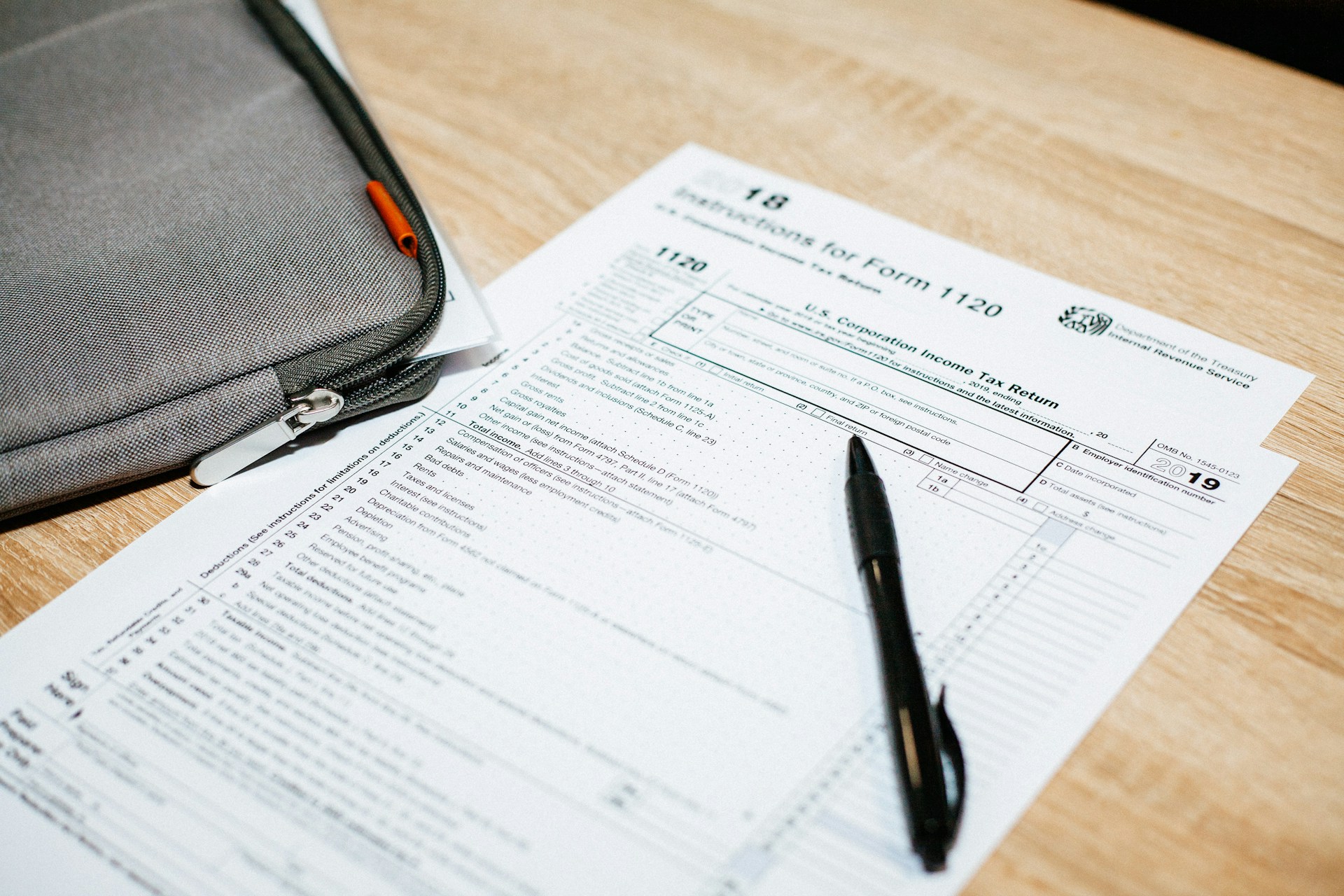
Some Etsy seller taxes are what any average business owner would pay. Others are more specific to ecommerce businesses. Yet others depend on how the Etsy platform itself handles them.
In this post, we’ll go over your tax obligations as an Etsy seller and the forms you need to familiarize yourself with. We’ll also run through sales tax considerations, deductions and credits, and other best practices around taxes.
Understanding Your Tax Obligations as an Etsy Seller
Determining If You Are a Business or Hobby
The IRS uses several factors to determine whether an activity is a hobby or a business. They will first look at whether you are running your Etsy shop to intentionally make a profit. The IRS looks at things like if:
- You dedicate a good amount of time and effort to running your shop and marketing your products.
- You operate your shop in a businesslike manner, such as investing in conducting market research.
- Your shop has shown a profit, even if not every year.
- The income from your shop is the main source for your livelihood.
- You changed your shop’s operations to improve profitability.
- You have the knowledge and skills needed to run a successful Etsy shop.
Note that new businesses often experience losses in the initial stages. This might not automatically disqualify your shop from being considered a business.
Types of Taxes Applicable to Etsy Sellers
Different types of Etsy seller taxes apply depending on the business structure and sales volume.
Federal Taxes
- Self-employment tax covers Social Security and Medicare taxes, which Etsy sellers pay if their total net income is $400 or more in a year.
- You will owe income tax on your net profit from your Etsy shop depending on your income tax bracket.
State and Local Taxes
- State income tax varies by state regulations.
- In most cases, Etsy will automatically collect and remit sales tax on your behalf if your state requires it. This tax also depends on the product and the buyer’s location.
Make sure to check the specifics, because if you are responsible for collecting sales tax, you can get in trouble for neglecting to do so.
International Taxes
- You might have VAT obligations if you sell in the EU and other international locales. Check the applicable thresholds by country to see if you need to register for VAT.
- Other other international taxes might also apply depending on the countries you sell in. You need to know the specific tax regulations per country, unless you hire a knowledgeable bookkeeper.
Key Tax Forms for Etsy Sellers

Form 1099-K: Understanding Its Role and Requirements
The IRS delayed the implementation of the new, lower threshold for receiving a 1099-K from third-party processors like Etsy. This means the conditions for receiving a 1099-K for Etsy seller taxes remain the same as in 2023.
- You must have over USD 20,000 in gross sales on Etsy Payments exclusively in the calendar year. Note that some states have lower thresholds, and Etsy may issue a 1099-K if your sales exceed your state’s threshold.
- Your shop must have processed over 200 transactions through Etsy Payments in the same calendar year.
- If you accept payments outside of Etsy Payments, they will not reflect on a 1099-K from Etsy. You must still report this income on your tax return.
- Etsy will combine sales from multiple shops that use the same Employer Identification Number to see if you reach the thresholds.
Essential IRS Forms for Reporting Income and Expenses
Form 1040
This form is your main individual tax return that reports your total income from all sources. It also captures your deductions and tax credits, and your net profit or loss from your Schedule C.
Schedule C
This is known as the profit or loss form where you report your net income from your Etsy shop. It applies only to sole proprietors and shows gross sales minus business expenses. It will also show depreciation as it applies.
Schedule SE
This is the form you will use to calculate and report the self-employment tax you owe. This includes Etsy shop income that you reported on Schedule C.
Self-employment tax covers Social Security and Medicare taxes, which you take responsibility for paying since you’re not an employee. The net profit from your Schedule C determines your self-employment tax liability.
Managing Sales Tax on Etsy

How Etsy Handles Sales Tax Collection and Remittance
The platform has a system in place to automatically collect and remit Etsy seller taxes for various states. However, the applicability can change as tax laws evolve.
As of June 1, 2024, Etsy will automatically collect and remit sales tax for orders shipped to customers in states with marketplace sales tax laws. No single definitive list exists for all the states with marketplace sales tax laws in effect.
Apart from the Etsy’s Seller Handbook, you can leverage the Etsy Help Center for information on sales tax collection.
Responsibilities for International Sellers Regarding VAT
VAT can be a complex issue for sellers who ship internationally, considering:
- EU VAT registration thresholds and required registrations.
- VAT rules for the country you’re operating from outside the US and additional VAT obligations for where you’re shipping your products.
- VAT applicability and rates depending on the type of goods you sell.
Deductions and Credits: Reducing Your Taxable Income
Common Deductible Business Expenses for Etsy Sellers
Etsy seller taxes don’t have to be super high if you know what deductible expenses you can claim. Some common ones are:
Shop Setup and Design
- Software
- Stock photos and design elements for the shop
- Business website domain registration and hosting fees
- Freelancer fees for design, product mockup, and business website building services
Note that you might depreciate items with a useful life exceeding one year over time, rather than deducting them upfront. Make sure that you keep all your receipts and invoices.
Inventory and Supplies
- Product raw materials
- Product packaging materials
- Inventory storage costs
Shop Operations
- Etsy Seller fees
- Marketing and advertising costs
- Product shipping costs
- Business subscriptions and memberships
- Business bank fees
Office Operations
- Rent
- Utilities
- Phone
- Internet

Using Tax Deductions and Credits
You can reduce your business’s taxable income through strategic deductions.
Deductible Business Expenses
Track all your business-related expenses with accompanying receipts, invoices, and bank statements for easier tax filing. Ask a bookkeeper with Etsy experience for tips on potential deductions you may not have thought of.
Retirement Accounts
Consider contributing to a SEP IRA or Solo 401(k), which can significantly reduce your taxable income for the year. If your income falls below a certain threshold, you might also be eligible to deduct traditional IRA contributions.
Health Savings Accounts
HSA contributions for high-deductible health plans are tax-deductible, and the funds grow tax-free when you use them for qualified medical expenses.
Quarterly Taxes: Planning and Payment
Estimating and Paying Quarterly Taxes
Etsy seller taxes are similar to self-employed taxes based on IRS rules. You must pay estimated taxes every quarter if you expect to owe at least $1,000 in federal income tax for the year.
- Estimate your taxable income from your total Etsy sales income for the previous quarter. You can also estimate your income for the upcoming quarter if you think it will be much different. Don’t forget to include any other business income you might have.
- Keep a running record of all your business-related expenses. Take the ones applicable for the same period.
- Subtract your total business expenses from your total sales income to get your estimated net profit for that quarter.
- Estimate your tax obligations based on current federal income tax brackets. Calculate and in your self-employment tax based on your net profit.
Preparing for Tax Season

Sample Checklists for Etsy Sellers at Tax Time
FAQs
What should I do if I don’t receive a Form 1099-K but have a substantial Etsy income?
If you think that Etsy should have issued you a 1099-K, contact support as soon as possible. You are ultimately responsible for reporting all your income from all sources on your tax return.
If Etsy still doesn’t issue you a 1099-K, download your Etsy shop’s transaction history This will show you your total sales for the year so you can compute your Etsy seller taxes. Report your total Etsy sales as business income when you file your taxes.
How can I verify that Etsy has correctly collected and remitted sales tax on my behalf?
Log in to your Etsy Seller account and click through to your Shop Manager. Look for the area where your Sales Tax information is located. Then, check where Etsy collects and remits sales tax. This can help you understand if:
- Etsy was responsible for collecting tax based on the location of your buyers, and;
- Etsy collected the right sales tax.
- You are still responsible for collecting and remitting sales tax for a particular state even if Etsy didn’t do it for you. Check your sales volume in that state and match it against the applicable sales tax nexus laws to understand your obligations.
Note that if you’re registered to collect sales tax yourself, you should have records of everything you collected and remitted. Compare those records to the sales tax information provided by Etsy to check for discrepancies. This helps you to ensure accurate sales tax reporting.
Are there specific deductions that are often overlooked by Etsy sellers?
Etsy sellers definitely miss some important deductions, like:
- Home office expenses deducted for specific spaces in your home that are dedicated to running your Etsy business. This comes out to a portion of your rent, utilities, phone, internet costs, and maybe others, too. Check the IRS’s specific rules for calculating this deduction, and track your usage accurately.
- Car mileage for any trips done for business purposes, like mailing packages, picking up office supplies, etc. Make sure you keep a detailed log of all the business-related trips you declare as expenses.
- Prototype, sample, and packaging materials are also deductible for all of your products, down to the last envelope and thank you sticker.
- Business subscriptions and memberships to things like design or customer management software and marketing and photo editing tools are deductible.
- Etsy seller memberships can likewise be deducted. You can also deduct direct costs for marketing and advertising, like creating marketing materials, running Etsy ads, and promoting your shop on social media.
- Educational courses or conferences you pay for related to your craft or running your business can be deductible.
- Bank fees associated with your business bank account can be deducted.

How do VAT obligations affect Etsy sellers who ship internationally?
VAT can get tricky for Etsy sellers shipping internationally, especially to the EU.
Familiarize yourself with the VAT registration thresholds for each EU member country that you sell in. If your total sales in any one exceeds this threshold, you’ll probably need to register for VAT there.
You can use the simplified EU VAT system called Mini One Stop Shop (MOSS). This applies for electronically supplied services and distance sales of goods under €15,000. If you qualify, we recommend that you register for MOSS. This way, you can collect VAT at the applicable rate and then file a single return to the MOSS authorities.
Etsy might collect VAT on behalf of some Etsy sellers through the Import One Stop Shop (IOSS) system. This applied for order values under €150.
If you struggle to understand the crucial VAT obligations and complex VAT registration requirements, consider consulting a tax specialist. Don’t solely rely on Etsy’s system. You are responsible for ensuring your compliance.
Can I claim expenses related to my Etsy shop setup and design?
Yes, certain expenses related to setting up and designing your Etsy shop can be qualified business expenses. This means you can deduct them to reduce your tax liability. For example:
- Software you purchase specifically for your shop design or product creation.
- Stock photos and other design elements you purchase for your shop banner, logo, or product listings.
- Website domain and hosting costs apart from Etsy that showcase your Etsy shop or where you manage your business.
- Fees paid to freelancers whose services you used for designing your shop logo, creating product mockups, or building your website.
Whatever expenses you decide to report, make sure that they are ordinary and necessary for your business. You can also consult a tax professional for specific advice on your situation.
What Is EcomBalance?

EcomBalance is a monthly bookkeeping service specialized for eCommerce companies selling on Amazon, Shopify, Ebay, Etsy, WooCommerce, & other eCommerce channels.
We take monthly bookkeeping off your plate and deliver you your financial statements by the 15th or 20th of each month.
You’ll have your Profit and Loss Statement, Balance Sheet, and Cash Flow Statement ready for analysis each month so you and your business partners can make better business decisions.
Interested in learning more? Schedule a call with our CEO, Nathan Hirsch.
And here’s some free resources:
- Monthly Finance Meeting Agenda
- 9 Steps to Master Your Ecommerce Bookkeeping Checklist
- The Ultimate Guide on Finding an Ecommerce Virtual Bookkeeping Service
- What Is a Profit and Loss Statement?
- How to Read & Interpret a Cash Flow Statement
- How to Read a Balance Sheet & Truly Understand It
Conclusion
Figuring out Etsy seller taxes doesn’t have to give you a headache. By looking at the aspects that dictate how you should handle things, we believe you can navigate them well.
Don’t forget that consulting a tax professional can be helpful. You may have a complex tax situation or simply don’t know yet which forms to use or what tax applies.








